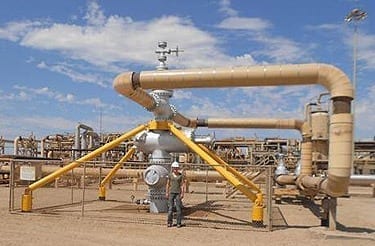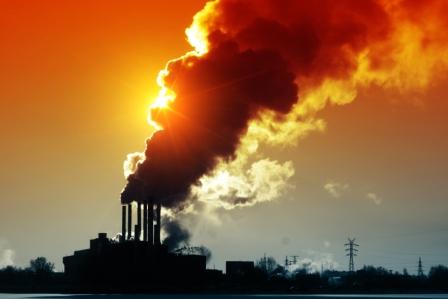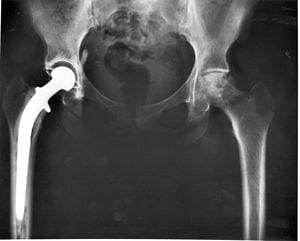
After 2001, both geothermal operations and seismicity climbed steadily.
An analysis of earthquakes in the area around the Salton Sea Geothermal Field in southern California has found a strong correlation between seismic activity and operations for production of geothermal power, which involve pumping water into and out of an underground reservoir.
“We show that the earthquake rate in the Salton Sea tracks a combination of the volume of fluid removed from the ground for power generation and the volume of wastewater injected,” said Emily Brodsky, a geophysicist at the University of California, Santa Cruz, and lead author of the study, published online inScience on July 11.
“The findings show that we might be able to predict the earthquakes generated by human activities. To do this, we need to take a large view of the system and consider both the water coming in and out of the ground,” said Brodsky, a professor of Earth and planetary sciences at UCSC.
Brodsky and coauthor Lia Lajoie, who worked on the project as a UCSC graduate student, studied earthquake records for the region from 1981 through 2012. They compared earthquake activity with production data for the geothermal power plant, including records of fluid injection and extraction. The power plant is a “flash-steam facility” which pulls hot water out of the ground, flashes it to steam to run turbines, and recaptures as much water as possible for injection back into the ground. Due to evaporative losses, less water is pumped back in than is pulled out, so the net effect is fluid extraction.
During the period of relatively low-level geothermal operations before 1986, the rate of earthquakes in the region was also low. Seismicity increased as the operations expanded. After 2001, both geothermal operations and seismicity climbed steadily.
The researchers tracked the variation in net extraction over time and compared it to seismic activity. The relationship is complicated because earthquakes are naturally clustered due to local aftershocks, and it can be difficult to separate secondary triggering (aftershocks) from the direct influence of human activities. The researchers developed a statistical method to separate out the aftershocks, allowing them to measure the “background rate” of primary earthquakes over time.
“We found a good correlation between seismicity and net extraction,” Brodsky said. “The correlation was even better when we used a combination of all the information we had on fluid injection and net extraction. The seismicity is clearly tracking the changes in fluid volume in the ground.”
The vast majority of the induced earthquakes are small, and the same is true of earthquakes in general. The key question is what is the biggest earthquake that could occur in the area, Brodsky said. The largest earthquake in the region of the Salton Sea Geothermal Field during the 30-year study period was a magnitude 5.1 earthquake.
The nearby San Andreas fault, however, is capable of unleashing extremely destructive earthquakes of at least magnitude 8, Brodsky said. The location of the geothermal field at the southern end of the San Andreas fault is cause for concern due to the possibility of inducing a damaging earthquake.
The Latest Bing News on:
Geothermal power
- Bukotermal starts design, permitting for geothermal power project in Croatiaon April 26, 2024 at 10:35 am
Having acquired the necessary property, Bukotermal is now at the designing and permitting phase of a geothermal power project in Varazdin, Croatia.
- Kite & Key Media: The Surprising Variety In Where Americans Get Poweron April 25, 2024 at 3:22 pm
Kite & Key Media takes a look at the surprising diversity in how U.S. states generate electricity. Where does your electricity come from? The answer depends on where you live. New Hampshire gets a ...
- Geothermal energy co. GA Drilling eyes U.S., European projects after funding from Nabors, otherson April 25, 2024 at 9:00 am
Another Houston-based company landed funding for geothermal energy development, and its CEO says there's still plenty of business to be done.
- Geothermal is good, but…on April 25, 2024 at 9:00 am
The problem with geothermal power is we don’t have enough. We only have 1,900 MW of it feeding into our power grid. That’s all the commercially proven geothermal resources we have as of now. The Lopez ...
- New Geothermal Technology Could Expand Clean Power Generationon April 24, 2024 at 6:00 am
Long confined to regions with volcanic activity, geothermal promises to become a much more versatile energy source thanks to new technologies ...
- Toshiba Receives Order for Power Generation Equipment for Renovation of Geothermal Power Plant in Kenya.on April 24, 2024 at 2:10 am
Toshiba Energy Systems & Solutions Corporation (Toshiba ESS) announced today that it has received an order from SEPCOIII Electric Power Construction Co., Ltd. for steam turbines and generators for the ...
- New Geothermal Technology Could Expand Clean Power Generationon April 23, 2024 at 5:00 pm
Since last November, this carbon-free, Earth-borne power has been flowing onto a local grid in Nevada. Geothermal energy, though it’s continuously radiating from Earth’s super-hot core ...
- ONGC Launches Fresh Bid For Geothermal Power In Ladakhon April 23, 2024 at 11:47 am
The state-owned explorer plans to drill two new geothermal wells of 1,000 meters depth each in Puga, Ladakh starting in mid-June. If successful, the wells could pave the way for setting up Ladakh's ...
- Former Shell employees resurrect dead well in 'monumental' move for geothermal energy: 'Big step change for humanity'on April 21, 2024 at 3:30 am
The well didn't contain gas, but it did burrow deep enough to reach the hotter layers of stone under the ground. Former Shell employees resurrect dead well in 'monumental' move for geothermal energy: ...
- How Texas unleashed a geothermal boomon April 20, 2024 at 12:00 pm
With its nation-leading renewables fleet and oil and gas industry, Texas is poised to dominate what boosters hope will be America’s next great energy boom: a push to tap the heat of the ...
The Latest Google Headlines on:
Geothermal power
[google_news title=”” keyword=”Geothermal power” num_posts=”10″ blurb_length=”0″ show_thumb=”left”]
The Latest Bing News on:
Geothermal induced earthquakes
- New Geothermal Technology Could Expand Clean Power Generationon April 24, 2024 at 6:00 am
Long confined to regions with volcanic activity, geothermal promises to become a much more versatile energy source thanks to new technologies ...
- Is Geothermal Power Heating Up as an Energy Source?on April 22, 2024 at 10:26 am
Glistening in the dry expanses of the Nevada desert is an unusual kind of power plant that harnesses energy not from the sun or wind, but from the Earth itself. The site, known as Project Red, pumps ...
- Geothermal Could Transform American Energy. Will Division Jeopardize Its Growth?on April 18, 2024 at 4:54 am
Geothermal energy, which utilizes the Earth’s subterranean heat to generate electricity and power industrial processes, is emerging as a potential bipartisan solution to energy and environmental ...
- Strasbourg court’s Swiss climate ruling could have global impact, say expertson April 15, 2024 at 1:43 am
The Guardian reports that last week’s ruling by the ECHR “could open the floodgates for a slew of new court cases around the world”.
- Geothermal could revolutionize American energy. Will polarization threaten its rise?on April 13, 2024 at 11:00 am
A new form of zero-carbon, on-demand energy could help bring stability to the grid with support on both sides of the aisle — if the diverse coalition now backing it can hold together ...
- Regents to recognize CU Boulder distinguished professors April 11on April 10, 2024 at 12:11 pm
At its meeting on April 11, the University of Colorado Board of Regents will recognize CU’s most recent slate of distinguished professors, including Brian Argrow, Marie Banich, Shemin Ge and Dragan ...
- Geothermal is the hottest thing in clean energy. Here’s whyon March 25, 2024 at 12:30 am
Earth’s interior contains an inexhaustible supply of heat, its many layers continuously warmed by the furnace-like core of our planet. For millennia, humans have tapped into this abundance for cooking ...
The Latest Google Headlines on:
Geothermal induced earthquakes
[google_news title=”” keyword=”geothermal induced earthquakes” num_posts=”10″ blurb_length=”0″ show_thumb=”left”]




